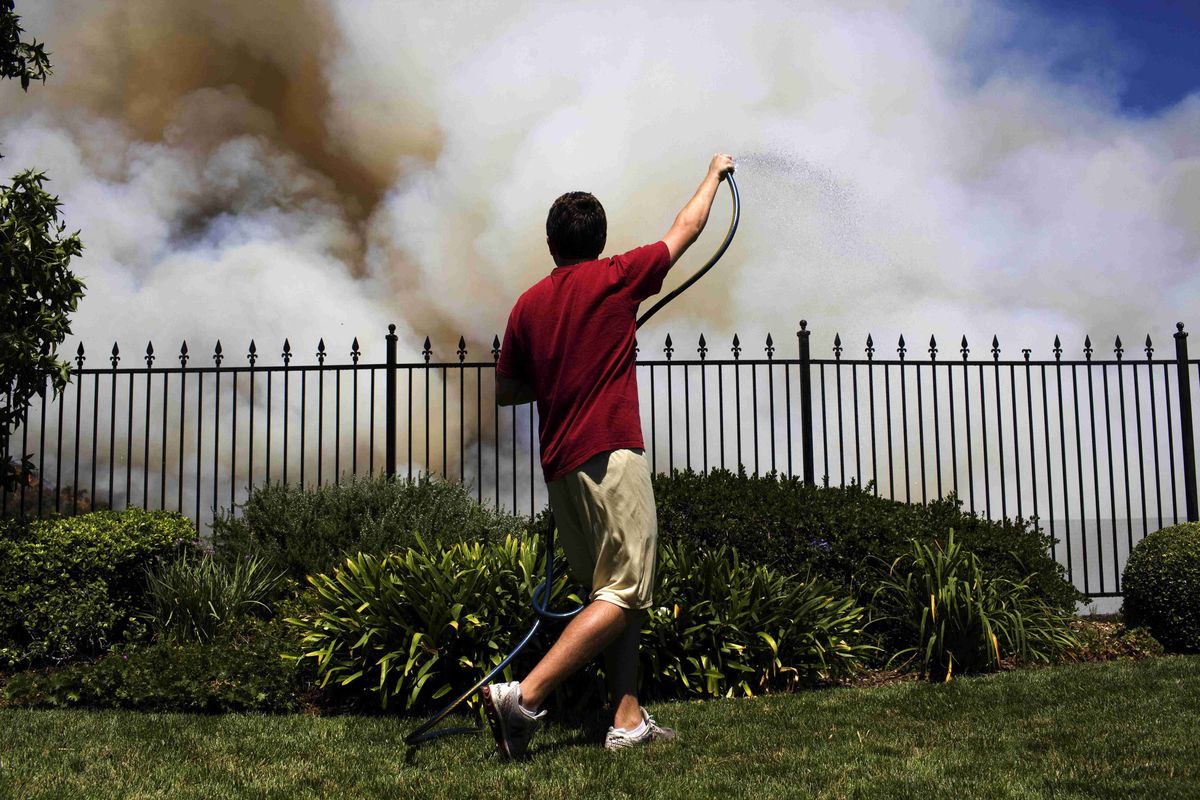California wildfire continues to rage
Thousands of homes in hills evacuated

LOS ANGELES – The fire in Southern California’s Angeles National Forest tripled in size Saturday, spreading rapidly to the east and west and prompting the evacuation of at least 4,000 homes in a broad swath of Los Angeles’ foothill neighborhoods as temperatures reached triple digits and flames drew closer to homes.
Three to five homes in rural Big Tujunga Canyon were lost, authorities said.
Three civilians were airlifted out for medical attention after being burned in the Big Tujunga Canyon area, said Bruce Quintelier, fire information officer for Angeles National Forest. No additional details were available.
He said the fire north of Los Angeles was moving in all directions: “It’s moved over to Altadena, southeast of where it started; it’s moved north, east and southwest. It’s been basically moving all over the place,” Quintelier said.
Just after 7 p.m., the evacuation areas were expanded.
At 6:20 p.m. at the northern edge of Altadena, a DC-10 dropped fire retardant at the base of an ominous column of smoke just north of a residential community and received a standing ovation from residents in a cul-de-sac, which had been under mandatory evacuation orders for an hour.
Among them was physician John Cooper, 52. “I think the firefighters are doing an incredible job. I’m in awe. I’d like to line them all up and shake their hands one at a time – and we also have our fingers crossed,” he said. “Live on the edge, and you take your chances.”
The Station fire, as the blaze is being called, has burned more than 20,000 acres, fire officials said.
Temperatures topping 100 degrees, with single-digit humidity and the steep, rugged topography of Angeles National Forest continue to make the fire a formidable foe despite low winds, fire officials said.
Massive and ominous-looking smoke plumes continue to envelop the Los Angeles area and have made for poor air quality, falling ash and smoky odors in the nearest communities, the San Fernando Valley and other parts of the Los Angeles Basin.
Adding fuel to the fire is 20- to 30-foot-high brush that has not burned in 60 years, said Mike Dietrich, incident commander for the U.S. Forest Service.
“If there’s a silver lining, there are no Santa Ana winds expected at this time,” he said.
In addition to the wildfire in Angeles National Forest, two separate blazes scorched about 1,000 acres in sprawling Camp Pendleton in San Diego County. Neither fire threatened structures.
An air assault through the night helped bring the Palos Verdes Peninsula fire under 90 percent containment. Expensive homes in Rolling Hills and Rancho Palos Verdes, seaside cities south of downtown Los Angeles, had been threatened, with flames lapping at the eaves of some residences. The blaze consumed about 230 acres.